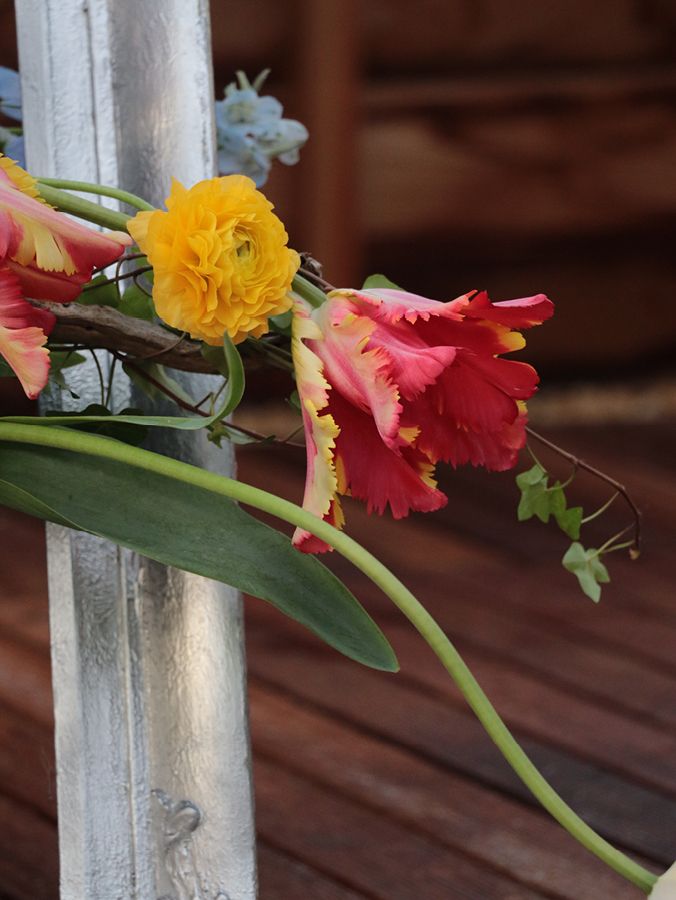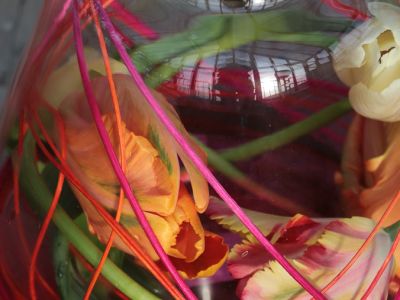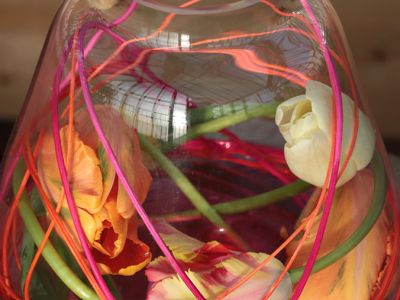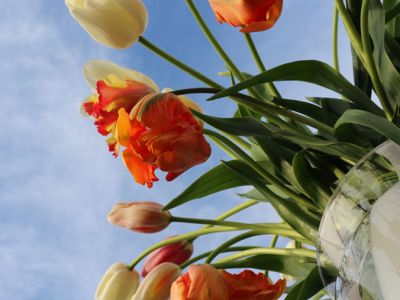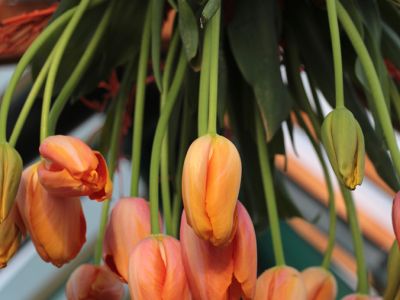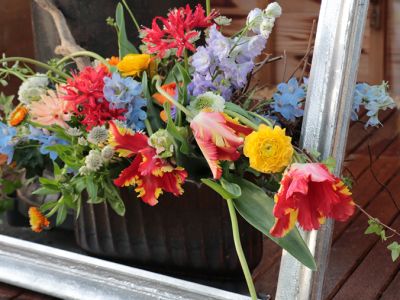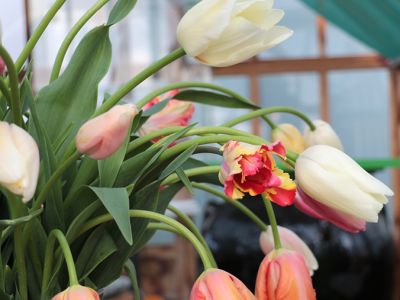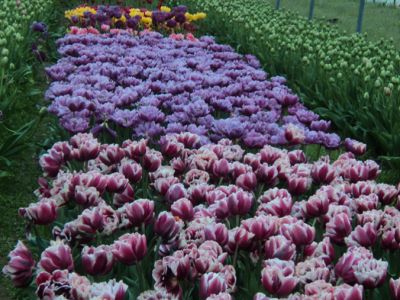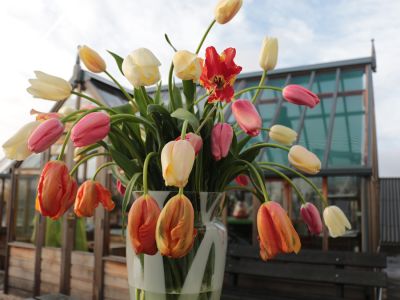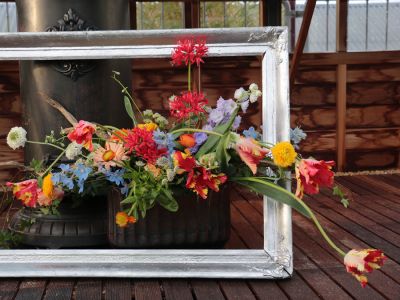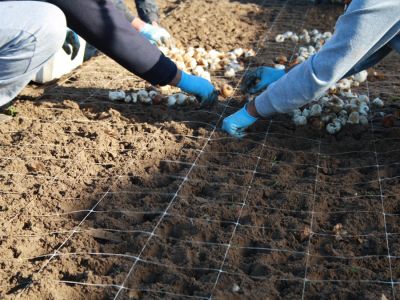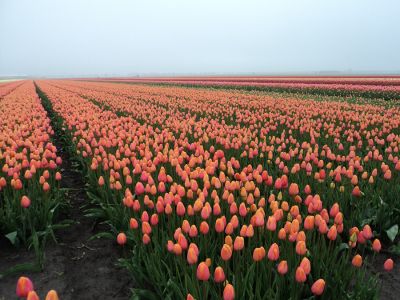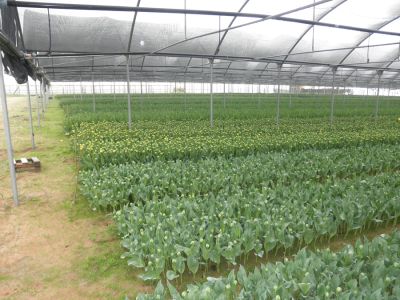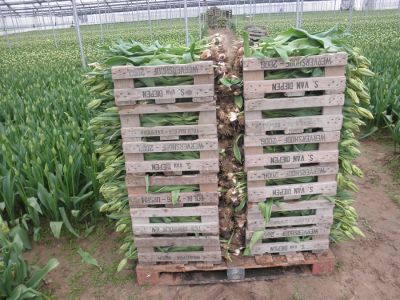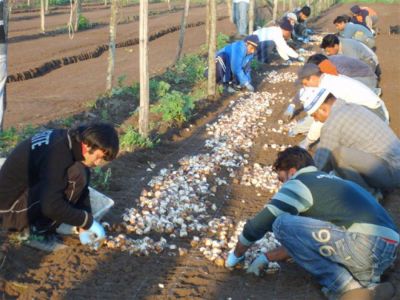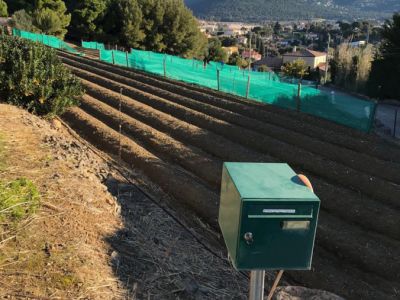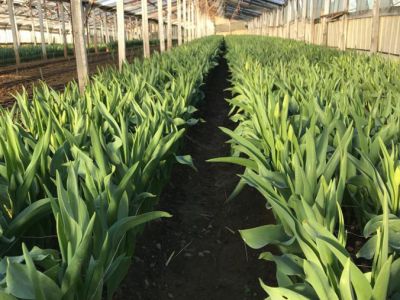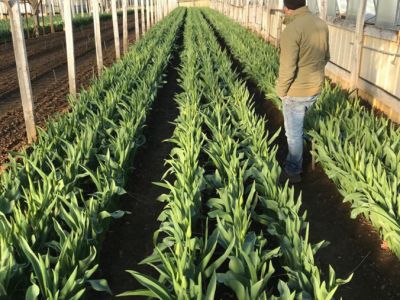Tulipa (Franse tulp)
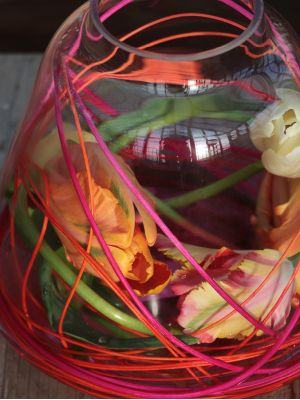
Calendar
The French tulip is available from the beginning of January to the middle of April.
In the spotlights
Christmas has come and gone, it’s still cold outside and spring still seems very far away. Yet we can already enjoy the first spring flowers. Blossom branches, daffodils, hyacinths and also the tulip are available again in the assortment. Last week we already put a real spring flower in the Florapodium spotlight, the Prunus. This week we will continue with the French tulip (it is also very nice to combine these two varieties in a vase by the way!)
Crown gem
The French tulip is a tulip that is not known to many consumers at all, even though it is much larger, longer and more pronounced than the normal 'Dutch' tulip. In addition, the French tulip also has a long vase life. We spoke with breeder Frank Schouten of nursery XLTulips to learn more about this beautiful French tulip.
Frank and his partner Jacco grow French tulips on 10 hectares of land in Italy. In addition to this fun and challenging cultivation, they also grow Dutch tulips in the Netherlands.
A lovely tulip
Ask a florist what he/she thinks is so beautiful about the tulip and you will get the answer: "The tulip is full of life". A French tulip can grow up to 20 cm in the vase and therefore seems to 'dance' in the vase. The flower buds open completely, until one by one all the leaves fall off and finally only the pistil is left.
But why is this special tulip so big, where do those long stems come from and why does this tulip have such a long vase life? Actually, that has everything to do with the cultivation method!

The cultivation
The French tulip owes its name to its origins. French tulips are grown in France, where they grow in full soil. XLTulips grows its tulips in Italy, but on the French latitude.
Cultivate in full soil
The French tulip is grown in the open ground without extra heat or artificial lighting. This means that the tulips grow under natural conditions. The tulips come from Italy or France early in the year, because it is already warmer there than in for example the Netherlands. At night it’s about 5 degrees Celsius and during the day 17 degrees Celsius. Because no extra heat or artificial lighting is involved and the flowers are in the ground, the tulips grow very slowly. Because of this relatively slow growth, the tulips are longer (at least 55 cm) and they can be kept in a vase for a long time (at least 8 days).
Everything that grows slowly and is not forced becomes stronger. The cultivation method and the characteristics of the French tulip are therefore very important for the quality of the flower. A French tulip needs about 60 days before it can be cut. A big difference with the Dutch tulip, which only needs 18 to 20 days to grow. On one square meter, therefore, a tulip can only grow once, in contrast to the 'normal' tulip varieties.
That the French tulip is relatively more expensive because of its slow growth process, is therefore not surprising. In addition, the flowers are heavier, making the labor and logistics process more expensive.
Better known
However, it is a shame that this special variety is not so well known among consumers. We asked Frank for his opinion: "A French tulip is a flower that you use in flower arrangements. Because the price of a French tulip is higher, you often only see them with exclusive florists ". We hope that this beautiful tulip will be better known to the local florist!
Organic bulbs
Frank sees a future in the cultivation of organic bulbs. The company is already brewing a whole bunch of organic tulips for which they also carry the label. But this crop still has many challenges. You can not help a crop if it is difficult after a wind or rain storm, for example. Due to the small cracks in the crop, the crop is more vulnerable to diseases. The flowers therefore often get a preventive biological treatment so that the leaves that are damaged cannot spread diseases. Frank now sprays organic materials such as seaweed to make a plant more vital. "I would prefer to see a garden with 30 hectares of organic tulips in the future, because that is were we’re heading!" Frank says. "Ultimately, I am convinced that organic fertilization and better handling of your plants will lead to a better yield of your product". He is now faced by the challenge to find the right cultivation method for this product.
FloraPodium, 17 January 2019








